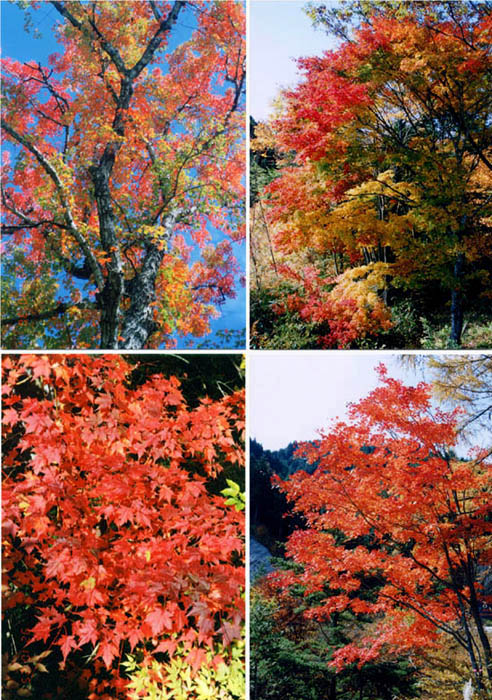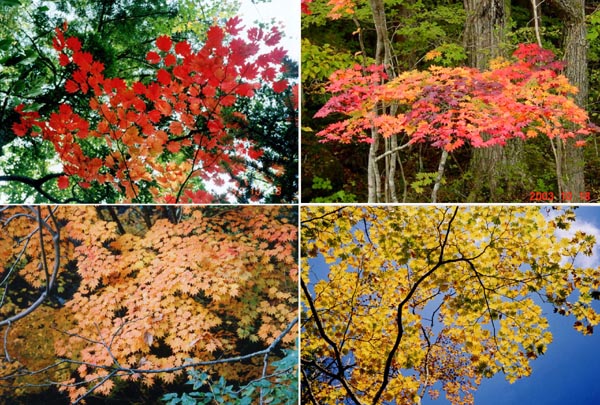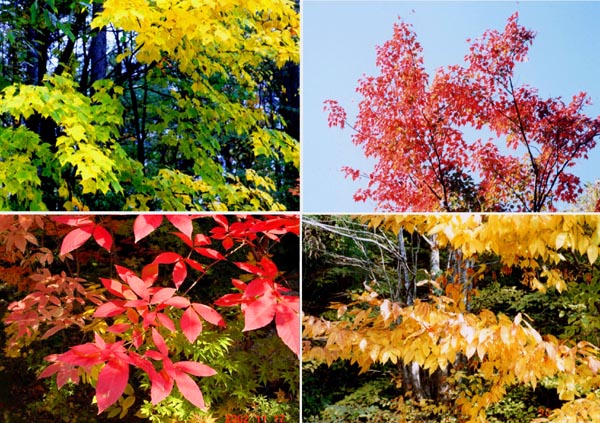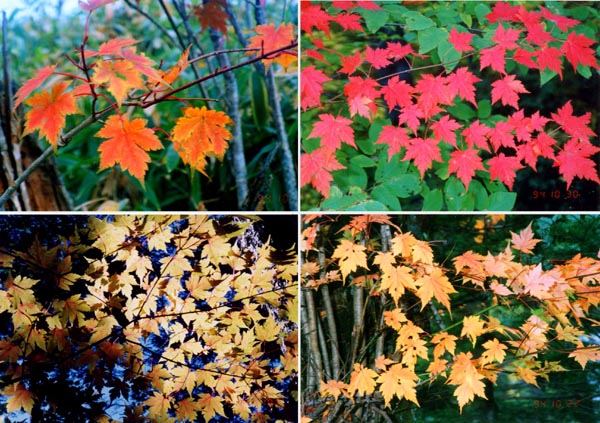Mechanism of turning red and yellow ............................ Japanese
It has been said that when the coloring conditions are assembled, such as rapid growing cold at night, decreasing of underground moisture content by dryness of the air and intensifying of the direct rays of the sun, the existence of tannin in the leaves produces anthocyan. As for " decreasing of underground moisture content by dryness of the air" there seems to be pros and cons.
Besides above conditions, according to NHK TV there seem to be assumed such conditions as "the character of each tree", "the moderate moisture such as the morning mist after changing " and "the climate conditions before autumn such as "the rain fall at rainy season", "the good weather of summer" and "the global warming"".

Turning red : by produced anthocyan
komine-kaede (Acer micranthum), kohauchiwa kaede (Acer sieboldianum), megusurinoki (Acer nikoense), etc.
Turning yellow : by outstanding carotenoid
hitotsuba-kaede (Acer distylum), itaya-kaede (Acer mono), chidorinoki (Acer carpinifolium), mine-kaede (Acer tschonoskii), etc.
Turning both red, orange and yellow
Irohakaede (Acer palmatum) , Ohmomiji (Acer amoenum), Yamamomiji (Acer matsumurae) , Hauchiwakaede (Acer japonicum)
In species other than those mentioned above, such as iroha momiji (Acer palmatum), o-momiji(A.amoenum),etc, some have both red leaves and yellow leaves on a tree, some have red leaves in one place and yellow leaves in another place, and some have leaves whose colors are between red and yellow, owing to the difference of climatic factors or physiographic factors, such as location on the north side or on the south side of the mountains, etc.

|
|
|
|
|
|

|
|
|
|
|
|

|
|
|
|
|
|

|
the Shirabiso pass, Nagano |
Mt. Chausu, Aichi side |
|
Mt. Mizugaki, Yamanashi |
Komagane, Nagano |